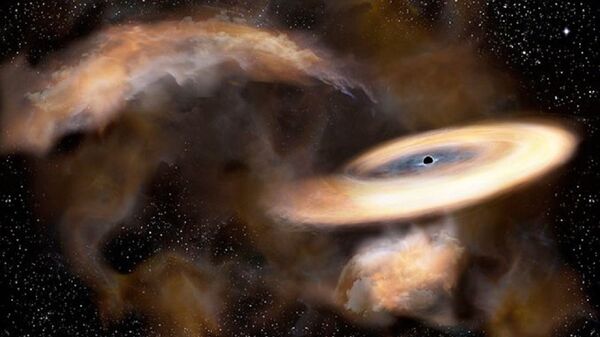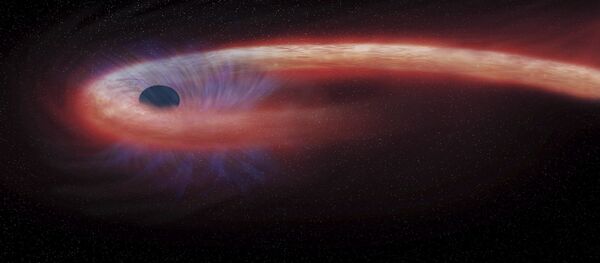The supermassive black hole Sgr A*, located in the centre of our galaxy and surrounded by a dense star cluster may have a twin that has a mass the size of thousands of Suns, astrophysicist Smadar Naoz from the University of California, Los Angeles, suggests. In her article for The Conversation, the scientist described how to catch this alleged elusive companion, based on her and her colleagues’ observations.
In their paper, published on arxiv.org, they explained that their team focused on one of the stars, orbiting around this central black hole, called S0-2. They note that the existence of a companion black hole with the mass of more than 100,000 Suns can be ruled out as they have not detected any effects on S0-2’s orbit, which would prove it. However, a smaller but still impressive partner could still be lurking out there.
As Naoz points out, our supermassive black hole offers great options for scientific research of this phenomenon as well as the history of our galaxy and universe as it is located relatively close to us at about 24,000 light-years away. The answer to the question if Sgr A* has a companion would also shed light on how the Milky Way that we know now was formed. If it is proved to have a pair of these space giants this could mean that it once devoured a smaller galaxy with a black hole in its heart.
Gravitational waves might be another hint that two massive black holes orbiting each other in the heart of the Milky Way, Naoz’s team suggests. As the frequency of these alleged waves is considered too low, the existing LIGO-Virgo observatories cannot sense them. This gravitational wave radiation, however, can be caught by a planned space-based detector known as LISA.



